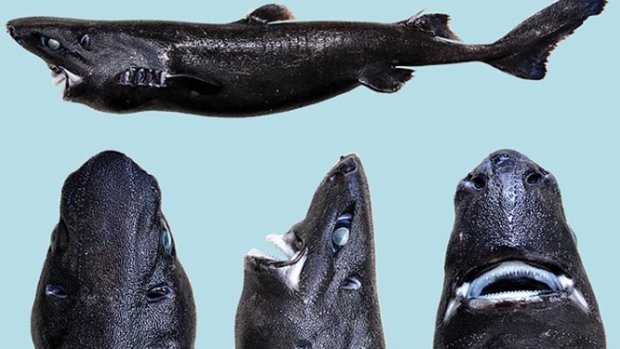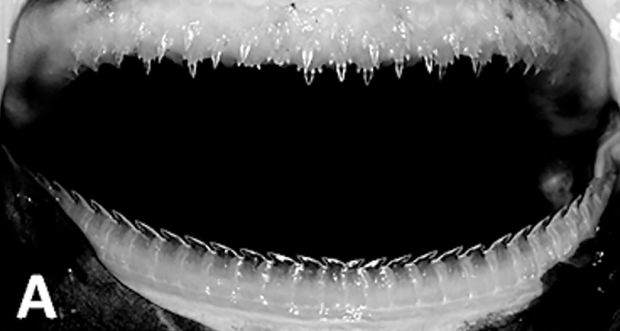
The inky-black fish already has the camouflage of darkness in the deepsea levels. But it's also covered in photophores — tiny dots that can emit light, cloaking the fish in a bluish glow and making it invisible to prey or predators below, the California scientist who identified the shark says.
"As they're swimming they can be backlit by the light and stand out, even though they're all black," Vicky Vásquez said. "So ... lanternsharks glow just enough to hide that shadow or that silhouette that they're creating."
The 30-50 centimetre shark — named by Vásquez's four young cousins "because it's good at being stealthy" — got introduced to the world last week thanks to a paper written by the Pacific Shark Research Centre graduate student and two other scientists.
Outside the hype
The paper appeared in the Journal of the Ocean Science roughly five years after the first ninja lanternshark was pulled from the water and catalogued.
The Spanish research vessel, Miguel Oliver, picked up the first specimen in the Pacific Ocean off the coast of Central America in 2010. Since that discovery, seven more of the sharks have been found off Costa Rica, Panama and Nicaragua, the scientists write.
It's the latest "lost shark," the term coined by Vásquez's research supervisor. That is, the new fish species is one that's long been overshadowed by the mystique of great whites and tiger sharks — just two of the more than 400 known shark species.

Much of the shark frenzy can be traced back to 1974 and Peter Benchley's bestseller Jaws and the film series that took off the next year. The author and former journalist ended up spending the latter part of his life as an ocean conservationist, trying to dispel the myths that evolved from works of fiction, including creating the Peter Benchley Ocean Awards.
That's partly why the shark's scientific name honours his memory — etmopterus benchleyi — with Vásquez saying she wanted to recognize Benchley's conservation efforts and use his name to boost the profile of a lesser-known shark.
It appears to have worked, with major newspapers and scientific journals writing about the shark's two names as much as they did about its discovery.
Ocean health
Just eight of the deepwater sharks have been found, all at depths ranging from 836 metres to about 1.4 kilometres below the water's ocean's surface, the paper says.
Their discovery also provides a barometer of the ocean's health in that region, Vásquez said. Other species of lanternsharks exist in most of the world's warm waters and she said she found it odd that none lived off the coast of Central America.
"So the question was, is that because there aren't any there ... or could it be that people did something and it affected the oceans?" she asked. "So I would say that, even though we don't have a lot to go on, the fact that we know the lanternsharks are there is a good sign."



Reader Comments
to our Newsletter